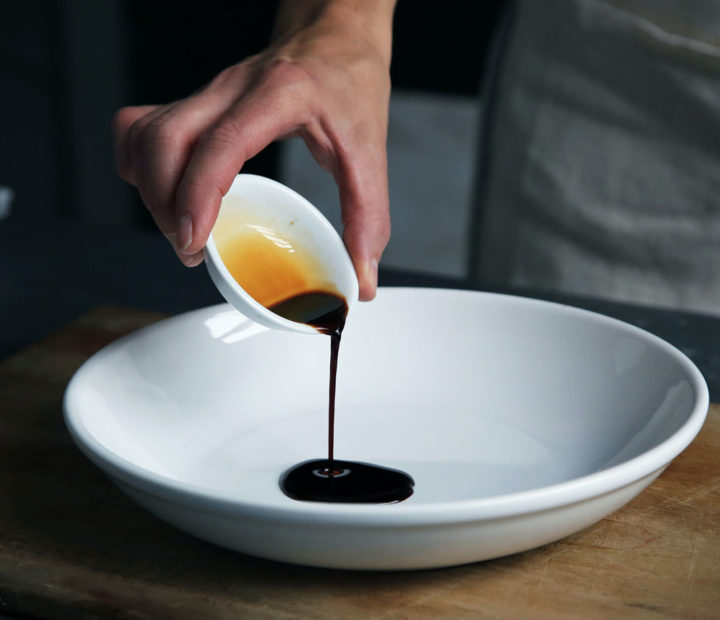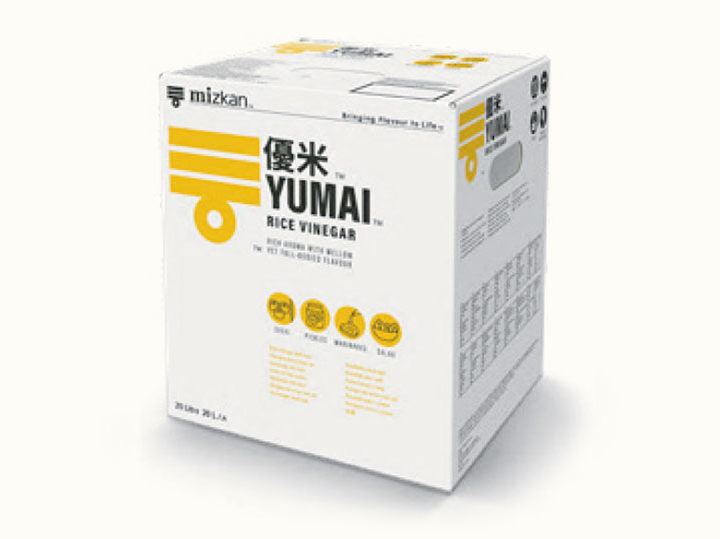A Guide to Dashi
15th November, 2021
Dashi is an essential part of many Japanese dishes. Unlike soup stock from other cuisines, dashi is only made from two ingredients and takes around 10 minutes to make.
This blogpost will explain what dashi is, the different types of dashi stock, how they’re used in Japanese cuisine and how chefs can incorporate them into their recipes to add an extra depth of flavour to any Japanese or fusion dish.
What is dashi?
Dashi is a Japanese soup stock that is typically made of fish such as dried bonito flakes or sardines, kombu, dried shiitake mushrooms, or a combination of both vegan/vegetarian and seafood ingredients.
The soup stock adds an extra depth of favour to dishes, known as umami. Let’s explore the different types of dashi stock:
Types of dashi stock
- Awase Dashi: made of different combinations, but mainly bonito flakes and dried kelp, this is the most popular dashi stock used in a variety of soup-based dishes.
- Kombu Dashi: only made of one ingredient, this is the easiest dashi to make and has the most subtle flavour. Ideal for vegetarian and vegans, the soup stock is also used to give a gentle flavour to seafood dishes.
- Katsuobushi Dashi: made of dried bonito flakes, this is an all-purpose dashi stock that can bring an umami flavour to almost any dish.
- Shiitake Dashi: made of dried shiitake mushrooms, it’s mostly used as a base for boiled foods. This is ideal for vegetarian and vegan customers who like meaty flavours.
- Niboshi Dashi: made of baby dried sardines, this soup stock brings a strong fishy flavour to dishes – which means it should be used carefully.
How to Use Dashi in Your Restaurant Meals
Below is a list of dishes containing dashi stock that you can incorporate in your restaurant meals:
- Awase Dashi: this is great for dishes such as miso soup, tamagoyaki (Japanese omelette) and oden.
- Kombu Dashi: ideal for vegetarian and vegan dishes such as vegetable ohitashi and yodofu; but also great for seafood dishes such as clam soup and salmon kombu roll.
- Katsuobushi Dashi: perfect for giving an aromatic flavour to any clear soups, simmered vegetable and noodle soup dishes.
- Shiitake Dashi: mainly used to enhance the flavour of kombu or katsuo dashi, this soup stock is great for fusion dishes such as salmon tartare bites, shiitake broth & miso tofu and vegetarian udon.
- Niboshi Dashi: great for adding a strong fishy aroma to miso and udon soups, rice bowl dishes and simmered dishes.
Dashi recipes
You may ask, what is dashi made of? Below are recipes of different types of dashi.
Awase dashi recipe
Ingredients:
- 20g dried kombu
- 20g dried bonito flakes
- 1l water
Preparation method:
- Put kombu in hot water for 30 minutes, bring to boil and turn off heat. Add bonito flakes and wait for 2 minutes. Strain the soup stock.
Kombu dashi recipe
Ingredients:
- 20g kombu (dried kelp)
- 1l water
Preparation method:
- Cut kombu into 10cm squares. Add the pieces to hot water and boil on medium heat. Turn off heat and keep kombu soaked for 30 minutes. Strain the soup stock.
Katsuobushi dashi recipe
Ingredients:
- 30g dried bonito flakes
- 1l water
Preparation method:
- Boil water, add bonito flakes and turn off heat. Let the flakes sit for 2 minutes before straining them. For a stronger flavour, you can leave the bonito flakes in the water for longer.
Shiitake dashi recipe
Ingredients:
- 40g dried shiitake mushrooms
- 1l water
Preparation method:
- Slowly wash the mushrooms to remove dirt. Soak in cold water and cover with lid. Refrigerate for 7-8 hours, once done, strain the mushrooms.
Niboshi dashi recipe
Ingredients:
- 30g dried baby sardines
- 1l water
Preparation method:
- Remove head and intestines of the sardines and toast them in a pan or oven grill. Once done, boil in hot water for 10 minutes and strain them out.
We hope our guide to dashi has been of help. Use any of the above dashi stocks to create a base flavour for your restaurant dishes. If you feel extra creative, try combining some of the ingredients and share the outcome with us.
Don’t forget to sign up to our newsletter if you’re interested in receiving all the latest news, updates and recipes related to the Japanese foodservice industry.




